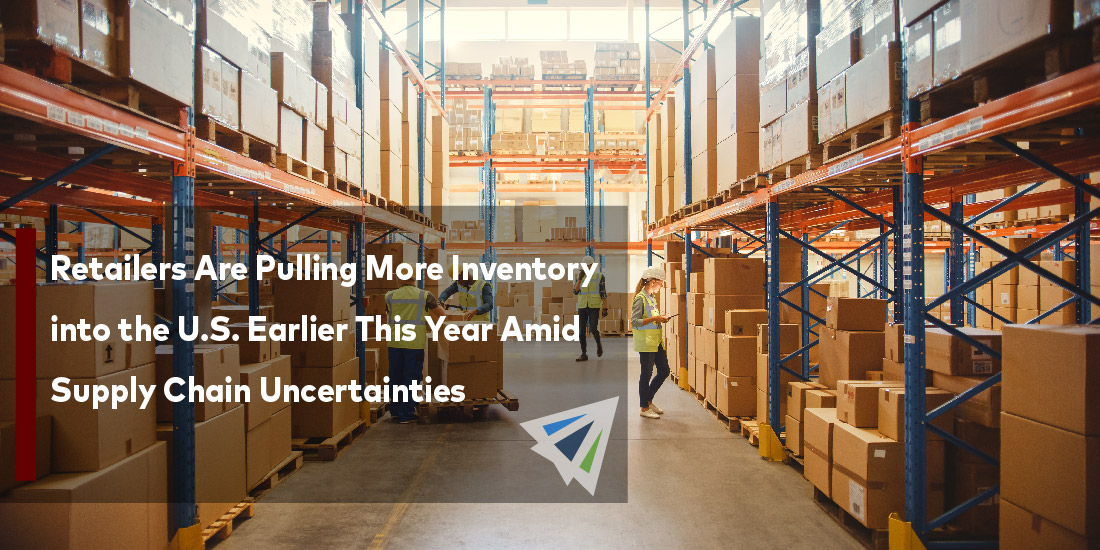Retailers Are Pulling More Inventory into the U.S. Earlier This Year Amid Supply Chain Uncertainties
American importers are pulling more inventory in the U.S. this year due to increased supply chain uncertainties. The COVID-related lockdowns in China—specifically at the ports of Shenzhen and Shanghai—are increasing anxiety in American shippers that the lifting of regulations will result in a flood of cargo to the west.
Last year, many businesses experienced stock outs from supply chain bottlenecks and COVID lockdowns abroad. They caused major disruptions in local and global logistics that weren’t easily or quickly repaired, and it left several businesses struggling to meet increasing consumer demand.
Sales are continuing to rise, but there is a fundamental shift in the type of products that consumers are spending their money on. Inventory-to-sales ratios remain pretty low, however, specific products, such as gardening, building materials, furniture, and department stores, are just beginning to return to ratios seen at pre-pandemic levels.
These behaviors are increasing inventory of appliances and furniture at big box retail stores. Inventory in the first quarter of this year is already 30 percent higher than the same quarter last year, indicating a major shift in the inventory-to-sales ratios for businesses like Target and Walmart. However, the demand continues to rise for consumable goods like food, drink, and toiletries.
Supply Chain Uncertainties
The looming threat hanging over U.S. companies right now is the lockdowns in China. While the severe lockdowns have ceased cargo movement out of the ports of Shanghai and Shenzhen and offered a bit of relief to the congestion catastrophe at the southern Californian ports of Long Beach and Los Angeles, the relief is expected to be very short-lived.
The general assumption (backed by data and trends seen over the last two years) is that this halt of cargo movement from China is going to be followed up by an immense rush of U.S. imports as retailers and other businesses attempt to recover from a cargo drought.
Clothing, makeup, and beauty product retailers have increased their stockpile of goods in the first quarter of this year up to 40 percent in some instances compared to the same time-period last year.
What this means for businesses dealing with international shipping is that demand for vessel availability and space is increasing in preparation for what’s expected to be a season of severe congestion when activity at the ports of Shanghai and Shenzhen is fully resumed. As the demand for capacity increases, shippers ought to be on top of their logistics planning far in advance to immediate need, as it’s expected that supply chain bottlenecks are going to continue increasing.
At this point in time, the best thing U.S. shippers can do is work with a strategic freight forwarding partner to devise logistics solutions that will mitigate the risks of supply chain hiccups. If you have any questions, please don’t hesitate to reach out to one of our team members! We’d love to help you and your team in any way we can!
